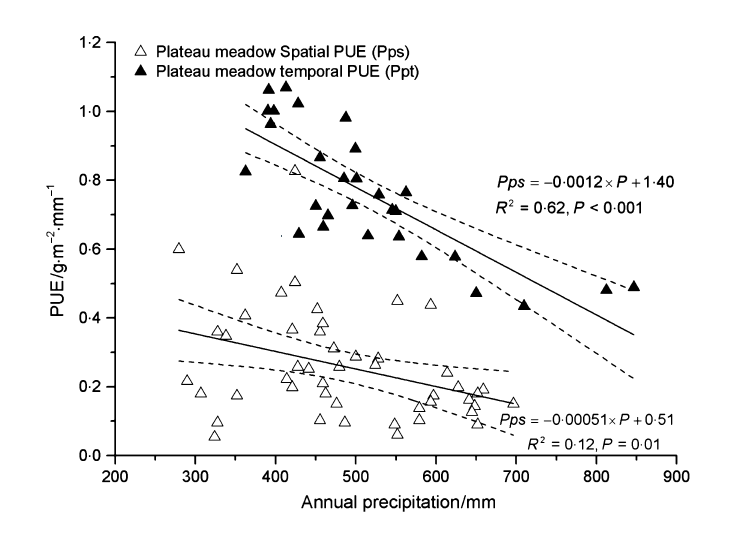Above-ground net primary production (ANPP) and precipitation-use efficiency (PUE) are key factors that can clarify the response of grassland ecosystem carbon and water cycles to ongoing climate change. The variations of ANPP and PUE were analysed based on longterm in situ observations of a species-rich alpine meadow in the north-eastern Qinghai-Tibetan Plateau from 1981 to 2010.
ANPP and PUE increased markedly over time. ANPP was significantly controlled by postgrowing season length (from 1 September to the end of growing season in the previous year, R2 = 0.31, P < 0.01). Regression trees showed that air temperature during October of the previous year played a predominant role in ANPP annual variations. Results indicated that a strong thermal-lagging effect on ANPP variations was present in the alpine meadow ecosystem. ANPP variations were undetectable during wet, normal and dry years (P = 0.25).
The finding supported the hypothesis that temporal site-specific ANPP variations were less regulated by a single factor. The temporal PUE declined linearly with increasing annual precipitation, and the slope was obviously steeper than that of spatial patterns. More ANPP variability in an alpine meadow under warming conditions might occur via community transition in the north-eastern Qinghai-Tibetan Plateau.

Figure Spatial vs. temporal PUE patterns of alpine meadow over Qinghai-Tibetan Plateau.
Additional Information:
1 Author Information: LI Hongqin, ZHANG Fawei, LI Yingnian, ZHAO Xingquan, CAO Guangmin.
Correspondence:ynli@nwipb.cas.cn.
2 Published: Grass & Forage Science.
